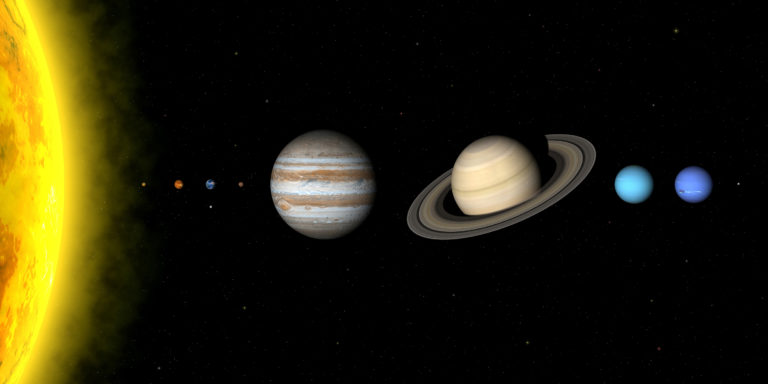The Sun is Earth’s number-one energy source. Thanks to the sun, we have seasons, plants and trees, weather, ocean currents, and climate. Because of the sun and its proximity to our planet, Earth is the only planet in our solar system that can host life.
It’s hard to fathom just how big the Sun is. With a 432,168 mile radius, the Sun is the largest object in our solar system, and makes up 99.8% of its mass. It would take about 1.3 million planet Earth’s to fill the Sun’s mass. Not only is the sun the biggest object in our solar system, its gravity is what binds it together.
The Sun is a giant hot ball of hydrogen (91%) and helium (8.9% ). Its mass is held in place by what’s called “gravitational attraction,” producing massive pressure and heat at its core. At 27 million degrees Fahrenheit, the Sun’s scorching-hot core is where nuclear fusion takes place, a process where light atoms smash together, creating energy.
Our sun is far from alone. In fact, every single star you see in the night sky is a sun shining in a far-away solar system.
How To Celebrate Solar Week (March 22-26)
Solar Week, a week of games, online lessons, and interactive activities about the Sun for grades 5-9, takes place twice a year in October and March. Check out these free activities and educational resources from Multiverse, an earth and science educational resource run by science experts from the University of California Berkeley. Each day of the week is a new activity!
During Solar Week, you can post any question you want about the sun on the Multiverse website. The page contains a number of topic categories where you can post your question for Multiverse scientists to answer. You can also email or tweet your question, or “plant” it in the “Answer Garden.”
Also check out the IEEE TryEngineering lesson plan Solar Power! With this lesson, students complete hands-on challenges with mini solar cells. Download it today.



